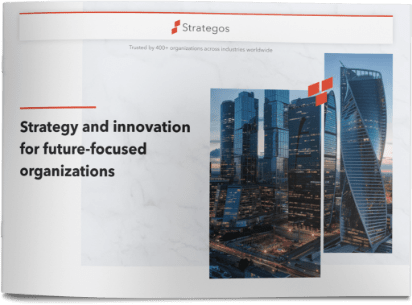You have heard this all before – strategy is about making tough choices. Business leaders and managers nod their heads when they hear this. Team members, both leadership and core, say the words to each other and to us. We then spend a lot of time and energy building out those choices about what solutions to offer our customers and how we will win against the competition. The clear implication is that we are going to invest resources of dollars and people to realize our strategic choices. Since those monetary and human resources are not infinite, we need to choose. We need to stop some activities to start or augment others.
Up to this point the heads are still nodding. When we ask “What are the gaps to achieve our goals?”, the responses are always plentiful: flip charts fill up, post-its pepper the tools, templates are duplicated and the font size shrinks to capture all the things we need to do. All the things we need to start.
When we ask “What are we going to stop?” nothing appears on any variation of the capture tools. Apparently, the only thing that stops is real dialogue. Clients in all industries struggle with this unavoidable part of choice. Sometimes the core team is brave enough to suggest two or three existing projects to stop but these generally sneak back in with words like “re-evaluate, re-prioritize or revisit”. When a proposal is made to stop a project, a typical comment from a
business leader is “Yes, we need to re-look at that.” But re-look, revisits, re-prioritize, re-evaluate all mean justify and that’s what starts. Nothing stops.
So how can we do a better job of stopping projects that don’t align with our chosen strategy?
- First, bring your list of top ten projects to initial strategy discussions. Of course they are going to be the biggest dollar projects or those
using your “A” players but also think about those that impact your customers or partners most. At the beginning, it’s not about sharing the list with others or aligning the projects because strategy formulation has not begun. Each team member should develop their own list independently. Once you are satisfied with the projects on your list, put it away for the moment. You have gathered up WHAT we are doing. That’s good enough for now. - After the Discovery phase of strategy you will have insights about customer needs, general trends, your beliefs and competencies. What needs,
trends, beliefs or capabilities are your existing projects addressing? Would other internal stakeholders describe the project similarly? Would an external observer agree? Right now it’s about understanding WHY are we pursuing the current projects. You still haven’t made a choice as an organization about which insights to address so it’s too early to assess the current project portfolio’s strategic fit. - Once your leadership team selects a strategy, you will determine gaps and outline actions. Now is the time to assess if WHY you are pursuing current projects aligns with your chosen strategy. All team members will now share their lists; there will be a robust dialogue about HOW existing projects support the selected strategic direction.
Some projects will align well with the strategic intent. Some will need to be modified. But some will not align because WHY we were doing them is no longer a strategic priority. These are the project we must stop.
Stopping a project by assessing WHY removes the hesitancy that arises when people believe that their performance or prior judgment is being questioned. Stopping non-aligned projects sends a strong, clear message to the organization that change is really here. Focused resources now have a better chance of realizing your chosen strategy. Saying “no” to some projects is really saying “yes” to strategy.
Mercy Salaz
Network Partner, Strategos, Phoenix





